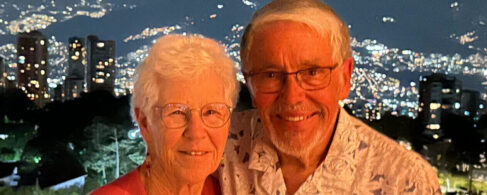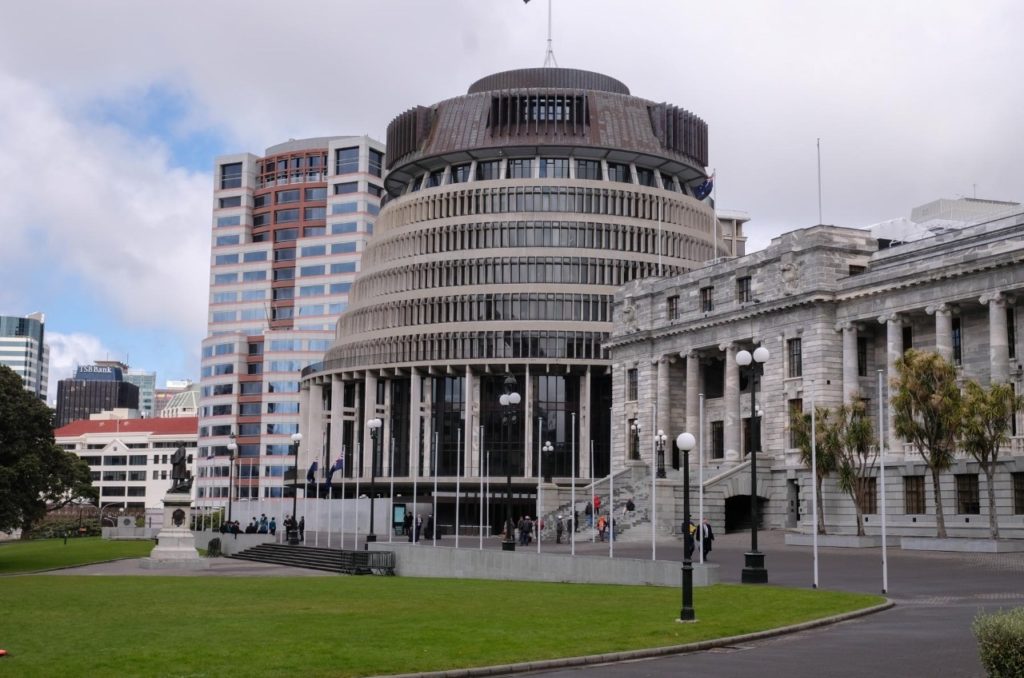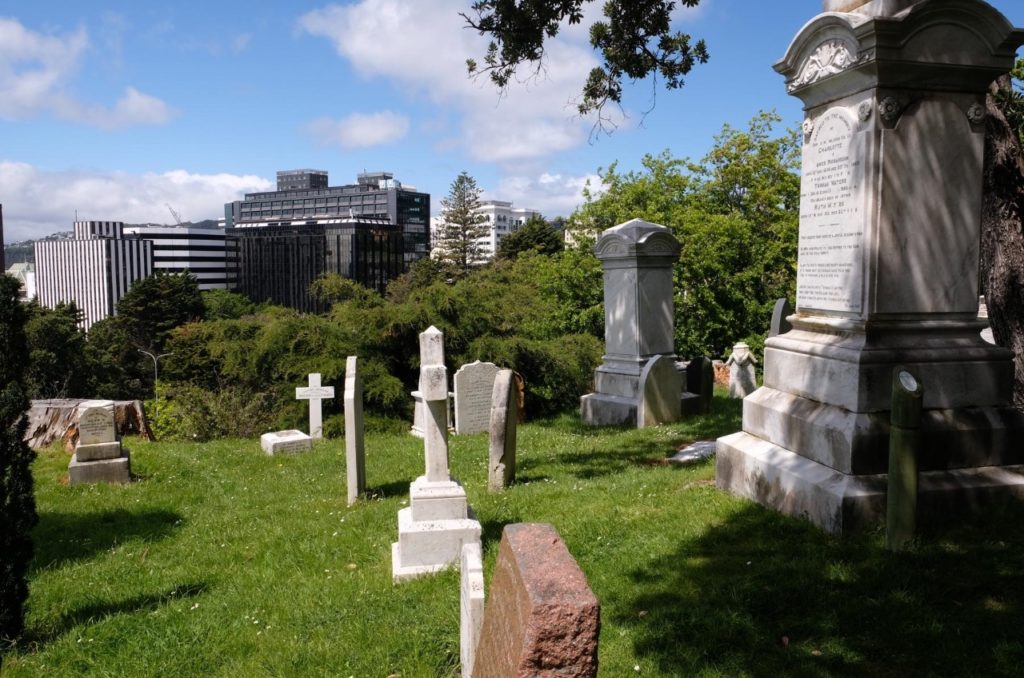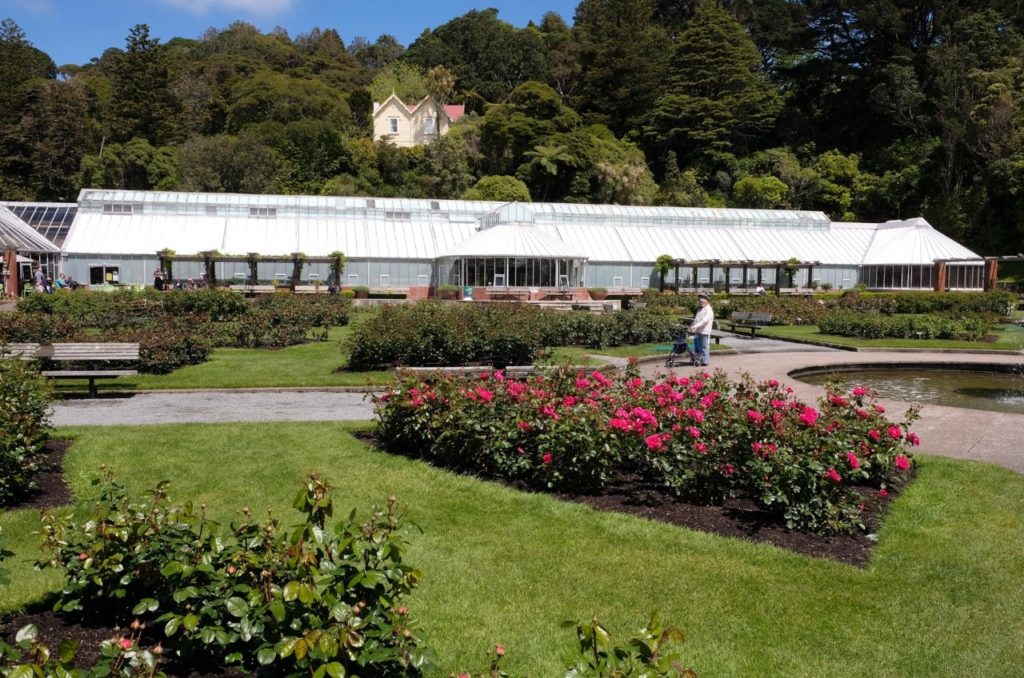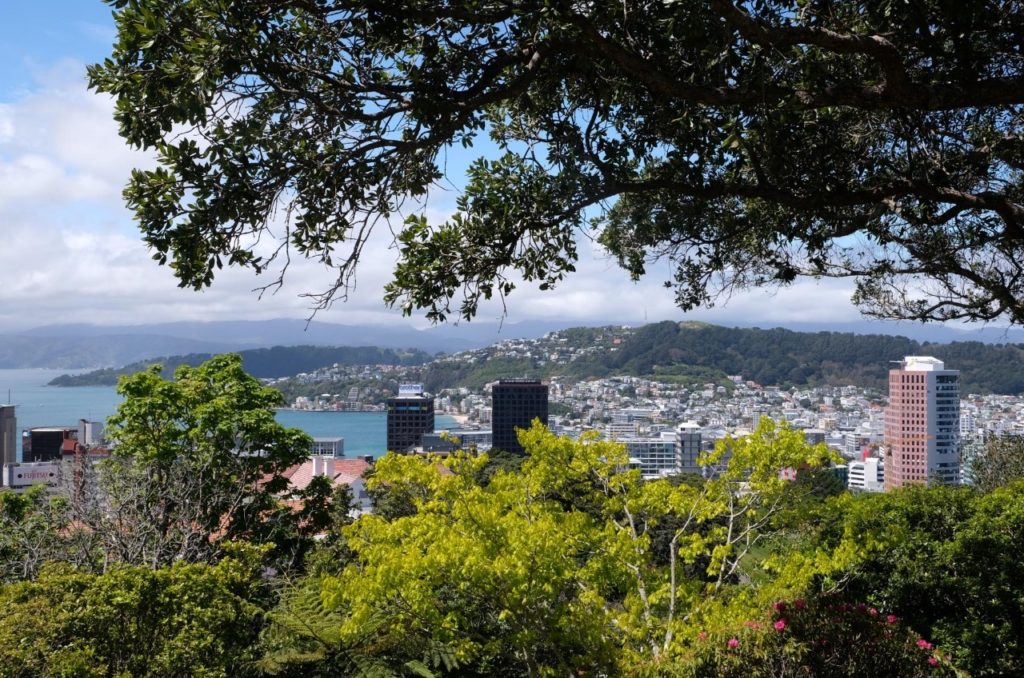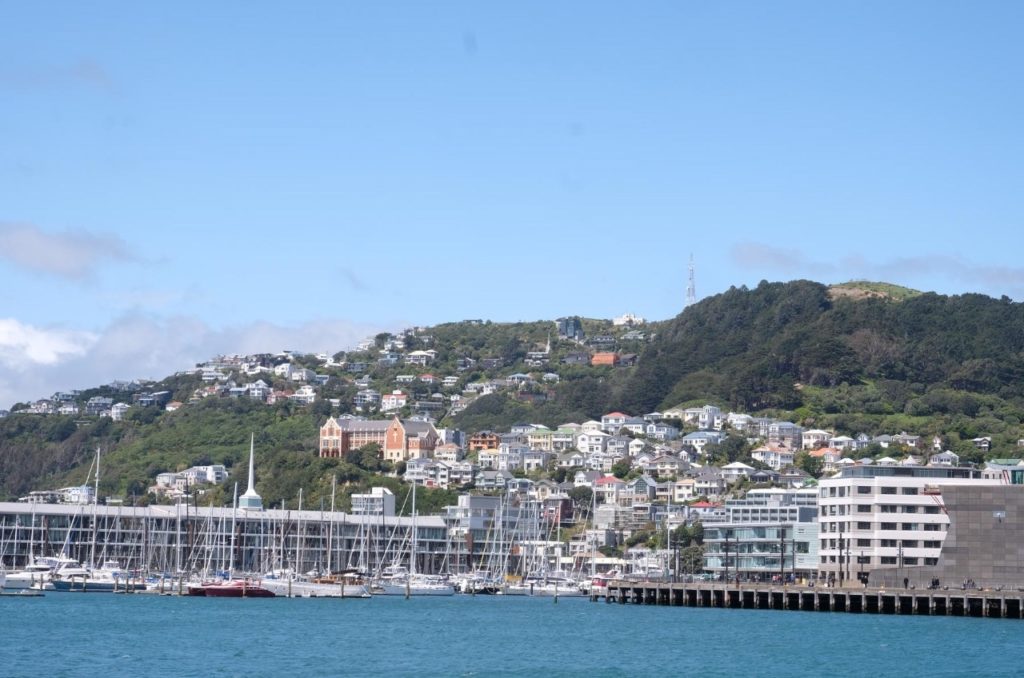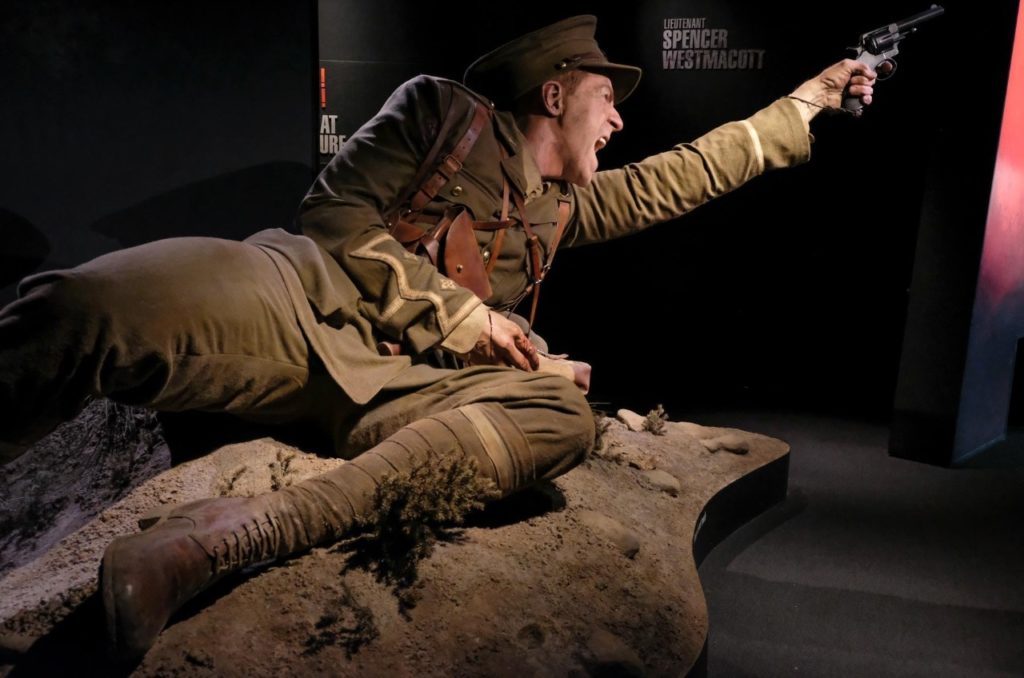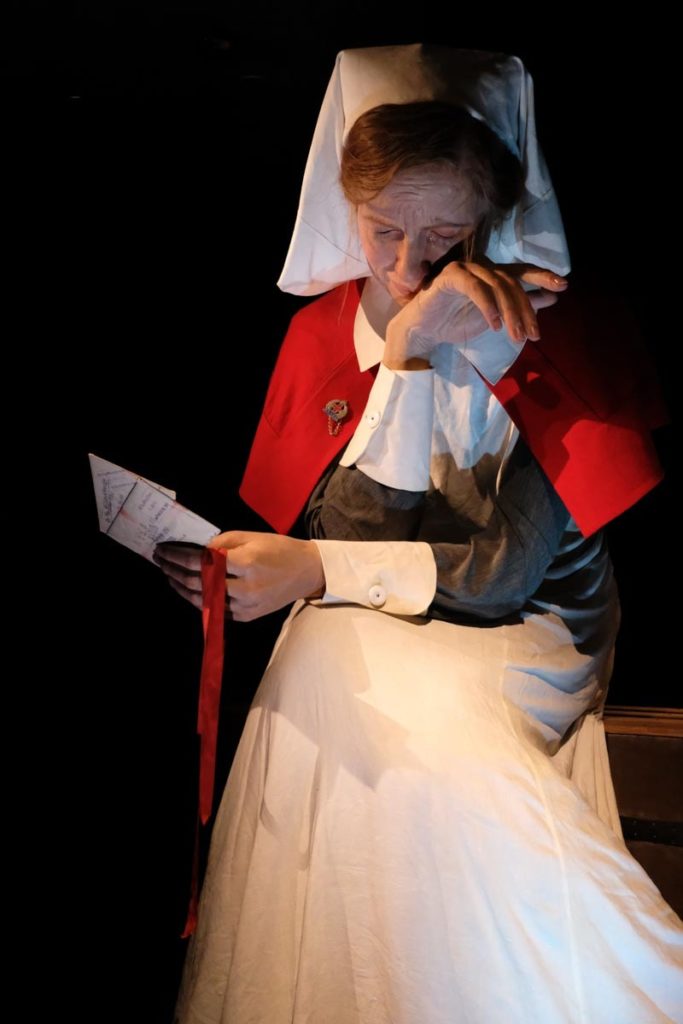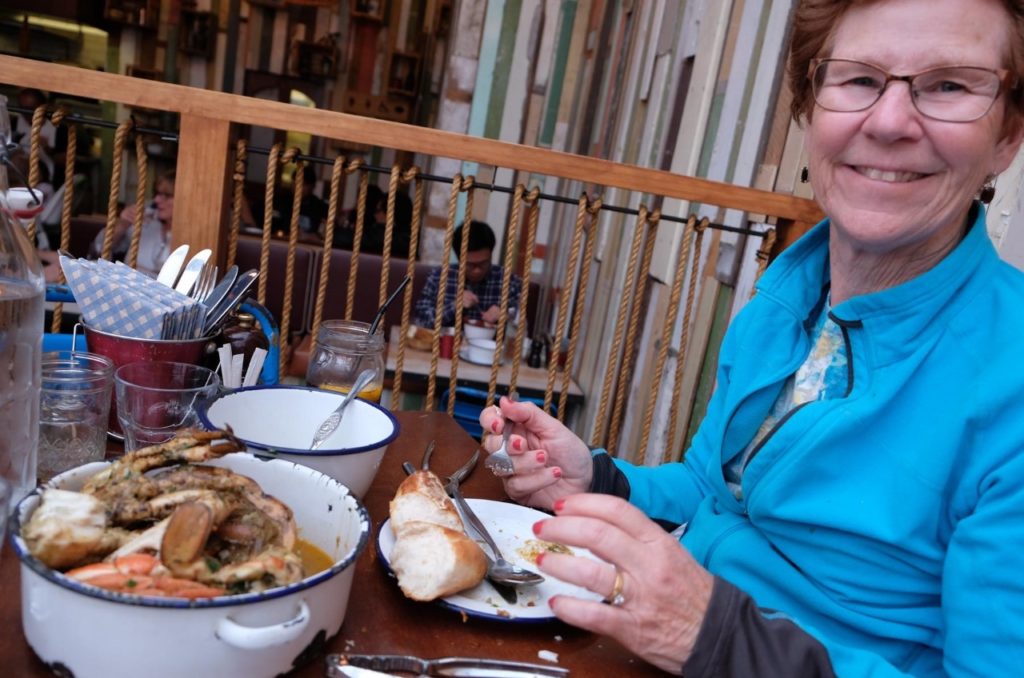Wellington, New Zealand
We spent the day doing traditional touristy stuff in Wellington, the capitol of New Zealand. A fair amount of walking was involved in the same weather we’ve been seeing since our arrival: partly cloudy, windy and temperatures in the low to mid 60s. The pavement was wet when we hit the road this morning but that’s about as close to rain as we’ve come. We’re keeping our fingers crossed for tomorrow when we cross the Cook Strait from North Island to South.
First stop: The Beehive, New Zealand’s concrete structure that looks like a beehive and is the capitol building. We had a guided tour by a nice lady who gave us details of New Zealand’s governmental structure and much history about New Zealand and its governance.
Government here is, she told us quite proudly, modeled after Westminster, the UK’s parliamentary system – a constitutional monarchy. Calling it a monarchy is a bit of a stretch since New Zealand no longer has any direct ties with the Queen’s government, but old habits die hard I guess. Actually, the Prime Minister recommends a Secretary General candidate to the Queen of New Zealand, a job held down by the Queen of England. Don’t ask me, I just tourist here.
New Zealand also has a unicameral government structure. There used to be the equivalent of the House of Lords – the Legislative Council – but that do-nothing body got in the way of efficient government and a brave Prime Minister appointed 29 new members – the suicide squad, it was called – in 1950 to the Legislative Council who, upon assuming office approved a bill from the House of Representatives that did away with the body entirely. Hmmm . . . do away with do-nothing governmental bodies? What an idea!
One interesting aspect of the process here is that after a bill is approved at its first reading it is assigned to a Select Committee for further review, analysis and modification. At this stage members of the public can appear before the Committee and give testimony. The bill is reported out of the Committee for a second reading. If it passes, the House of Representatives, acting as a committee of the whole, debates it further and then takes the third reading vote. If passed it is presented to the Secretary General for signature or, theoretically, disapproval. No Secretary General has ever disapproved a bill, however.
But enough of New Zealand politics. Everywhere we go in New Zealand folks who dare be so bold comment on our upcoming election, shaking their heads and showing great sympathy for a people who suffer such an indignity as our current pair of candidates. The only real opinion anyone has expressed to us so far was by our tour guide, a 50-ish lady who said, “I must say that the idea of Trump becoming President scares me.” But that’s a sample of only one. (I, Judy, had a discussion yesterday with a lady from England who expressed the same opinion.)
After the Beehive we made a quick swing by Old St. Paul’s church, interesting to us for two reasons: a) it’s an 1860 wooden structure that has somehow escaped burning to the ground and b) U.S. soldiers worshiped here while stationed in Wellington to defend New Zealand from feered Japanese invasion.
From there we found our way up the hill (everything in Wellington is either up or down the hill; there are no flat spots) to the Bolton Street Memorial Park, the final resting place for some of Wellington’s elite, including Ric***********, New Zealand’s longest serving Prime Minister. He was a staunch British loyalist who liked to dress up in British military regalia. “King Dick” they used to call him we learned later at the Te Papa museum.
The burial grounds connected to the Botanical Gardens. We passed through a corner of the gardens but were worried about having enough time at the museum so we took a short cut. This path led us to the Cable Car, which took us down the hill to near our hotel and on the way to the Te Papa. Sounds like a great time saver but we had to walk up the hill almost as far as the cable car took us down but the cable car is something any self respecting tourist must do so we did it.
We reached the Te Papa by walking along the waterfront, a pleasant stroll. We stopped at a storefront sandwich shop for a quick lunch.
The Te Papa is a relatively new museum, the national museum of New Zealand. And a fine museum it is – and free!. We started on the fourth floor, which is dedicated to Maori subject matter. The displays trace Polynesian arrival, inter-tribal warfare, the invasion by the British and other Europeans and the conflicts and at least partial resolution that came about after the 1840 Treaty of Waitangi. We learned that there have been resolution of some land and other claims in the recent past but other claims are outstanding. Claim 262 has to do with intellectual property rights, including Maori claims to knowledge related to plants and animals. I don’t pretend to understand the ins and outs of this subject nor where the inquiry stands, but it gives you an idea of the complexity of the process.
The other striking display at the museum, taking up almost all of one floor, has to do with New Zealand’s role in World War I and in particular New Zealand’s initial campaign in Turkey in the Gallipoli campaign. New Zealand had more than 16,000 killed and 40,000 wounded for a 58% casualty rate in all of WWI. Particularly moving were the 2.4 times life sized figures depicting actual New Zealand participants in the Gallipoli campaign. The war had a lasting impact on the people of New Zealand and this display was a testimony to the deep level of feeling that remains to this day.
One other factoid from the Te Papa: before the Polynesians arrived New Zealand’s grass land comprised 5% of the total land area. Today it is over 50%. The Maoris and Europeans cut and burned the landscape to make room, ultimately, for sheep and cows.
Then, finally, supper at what Google told me was the closest sea food restaurant – the Crab Shack, a chain of such establishments. Our waiter talked us into a kilo of crabs. Figuring that seasoned lobster shuckers like us would have no problem, we dug in. But what a job it turned out to be. Lots of cracking and picking for little scrids of meat. No tails and claws, just legs. But I liked it (Judy not so much) and at least we have bragging rights.
So to bed and up for the 9 AM ferry tomorrow. The adventure continues.
